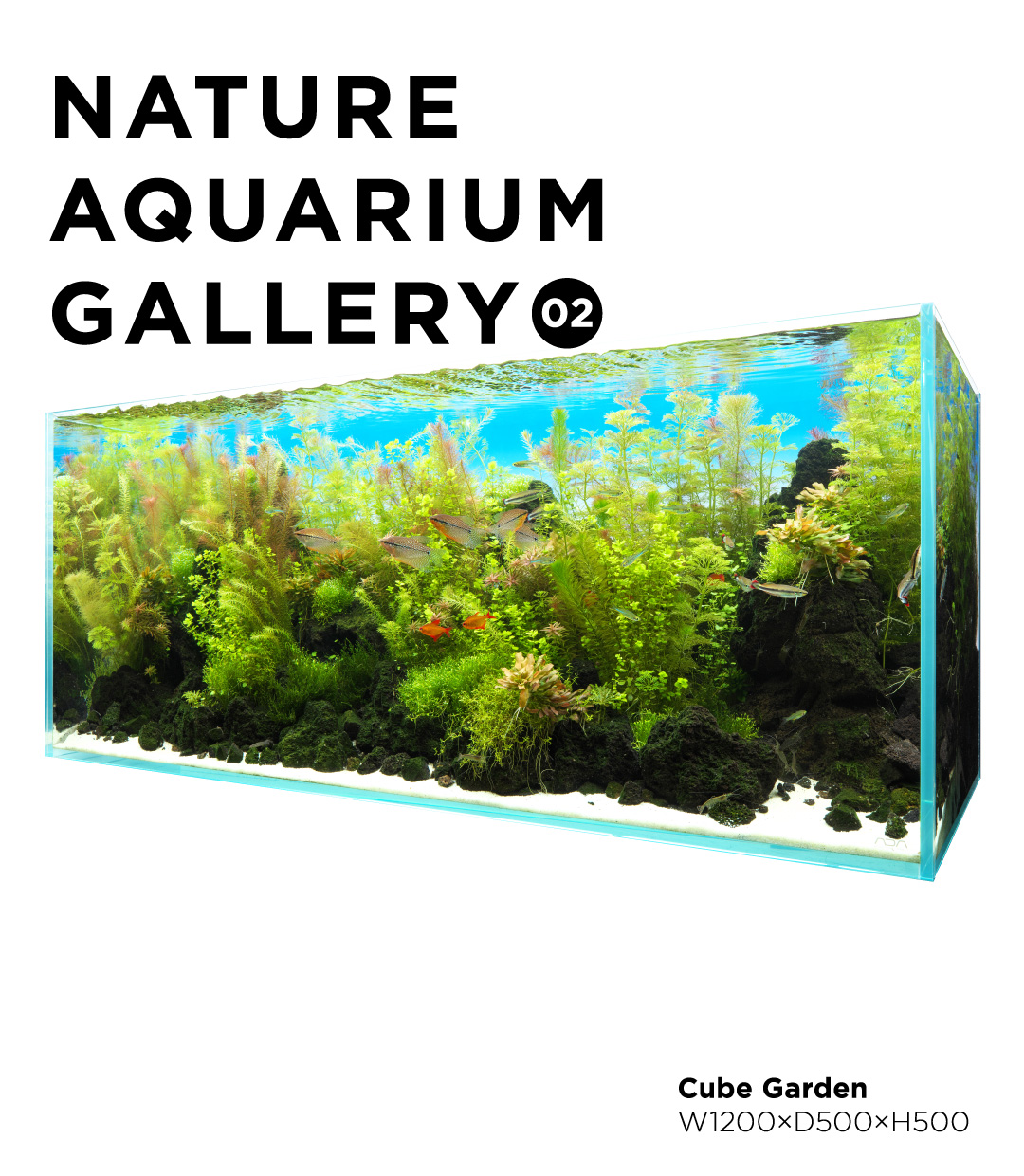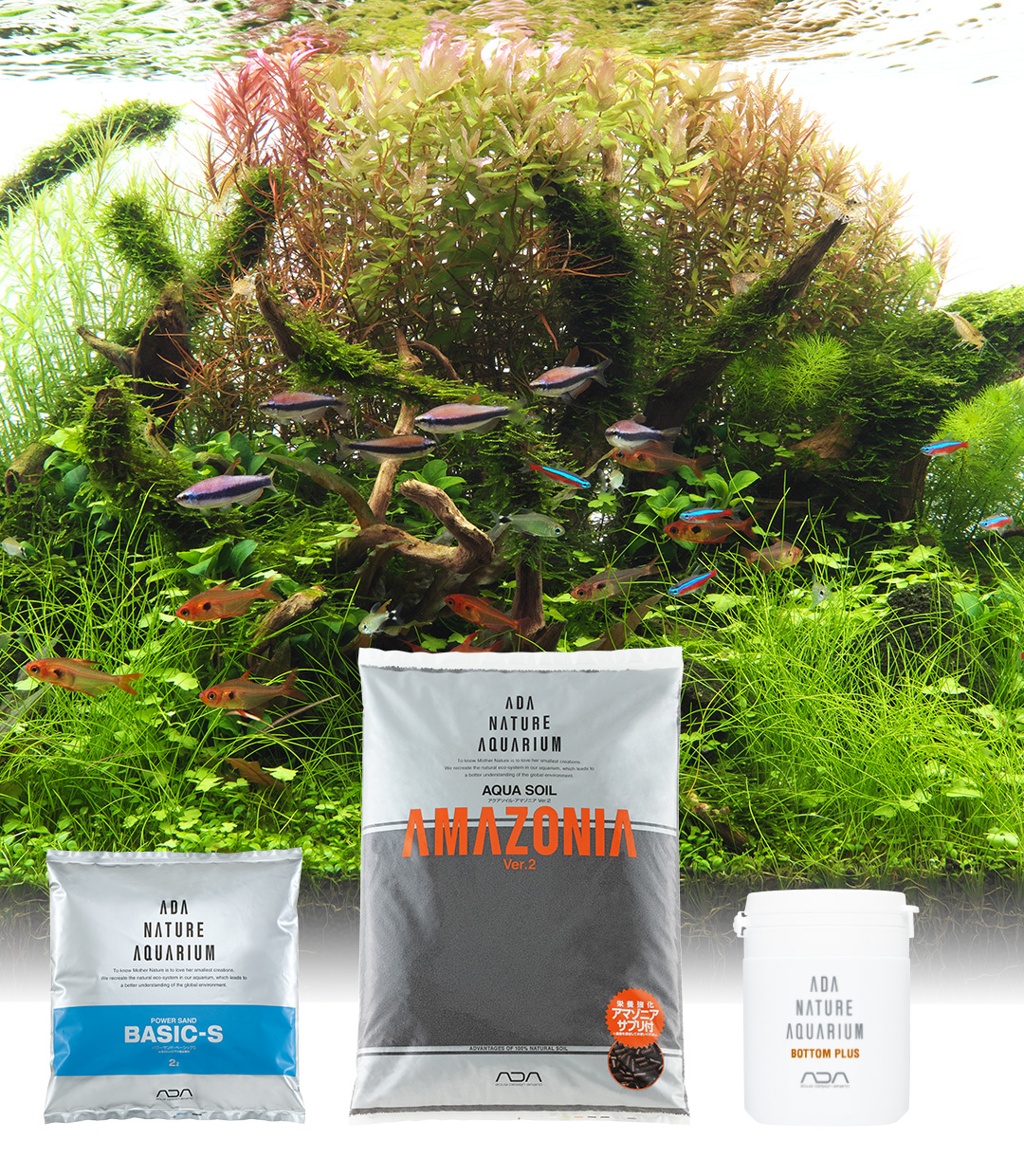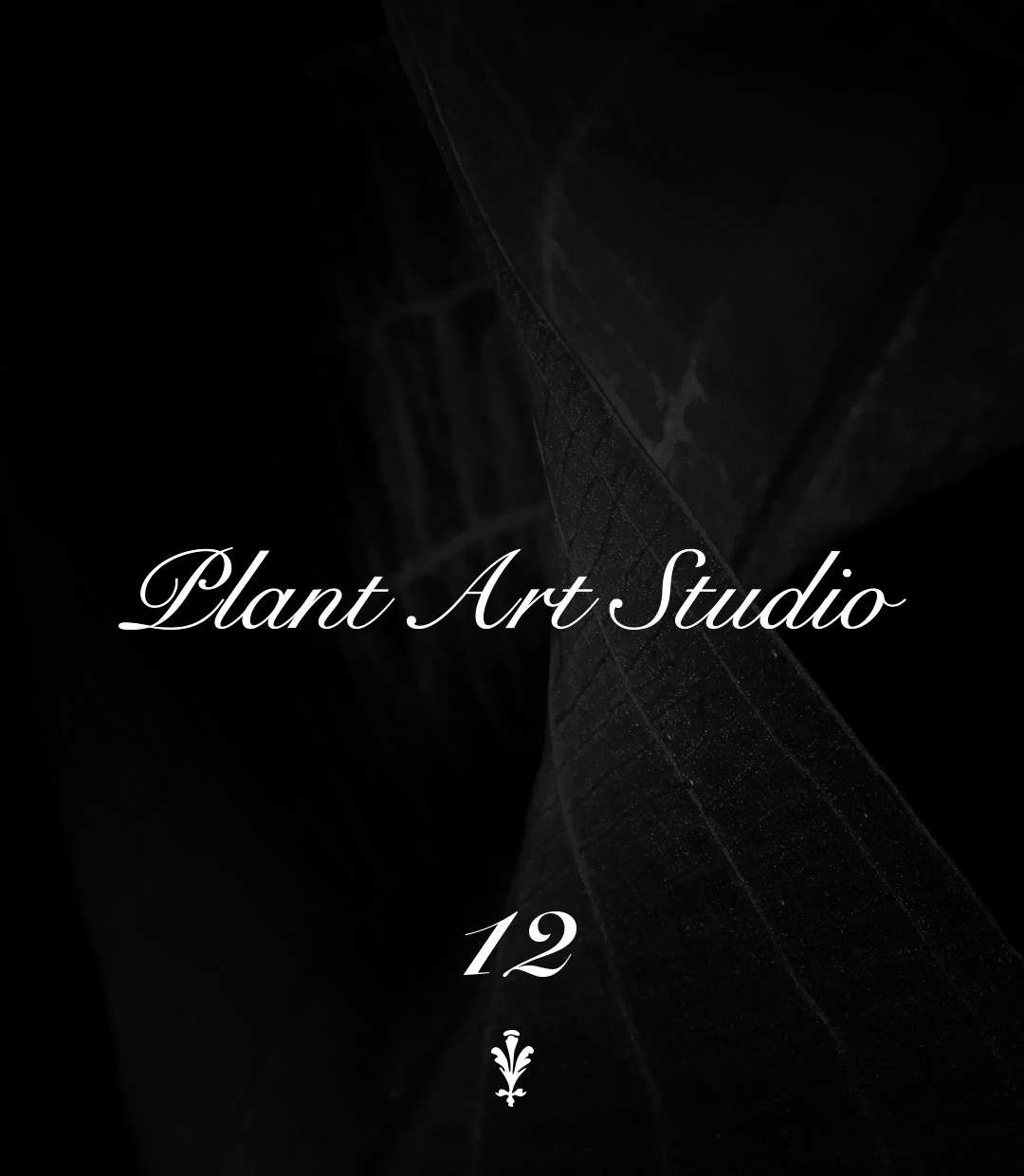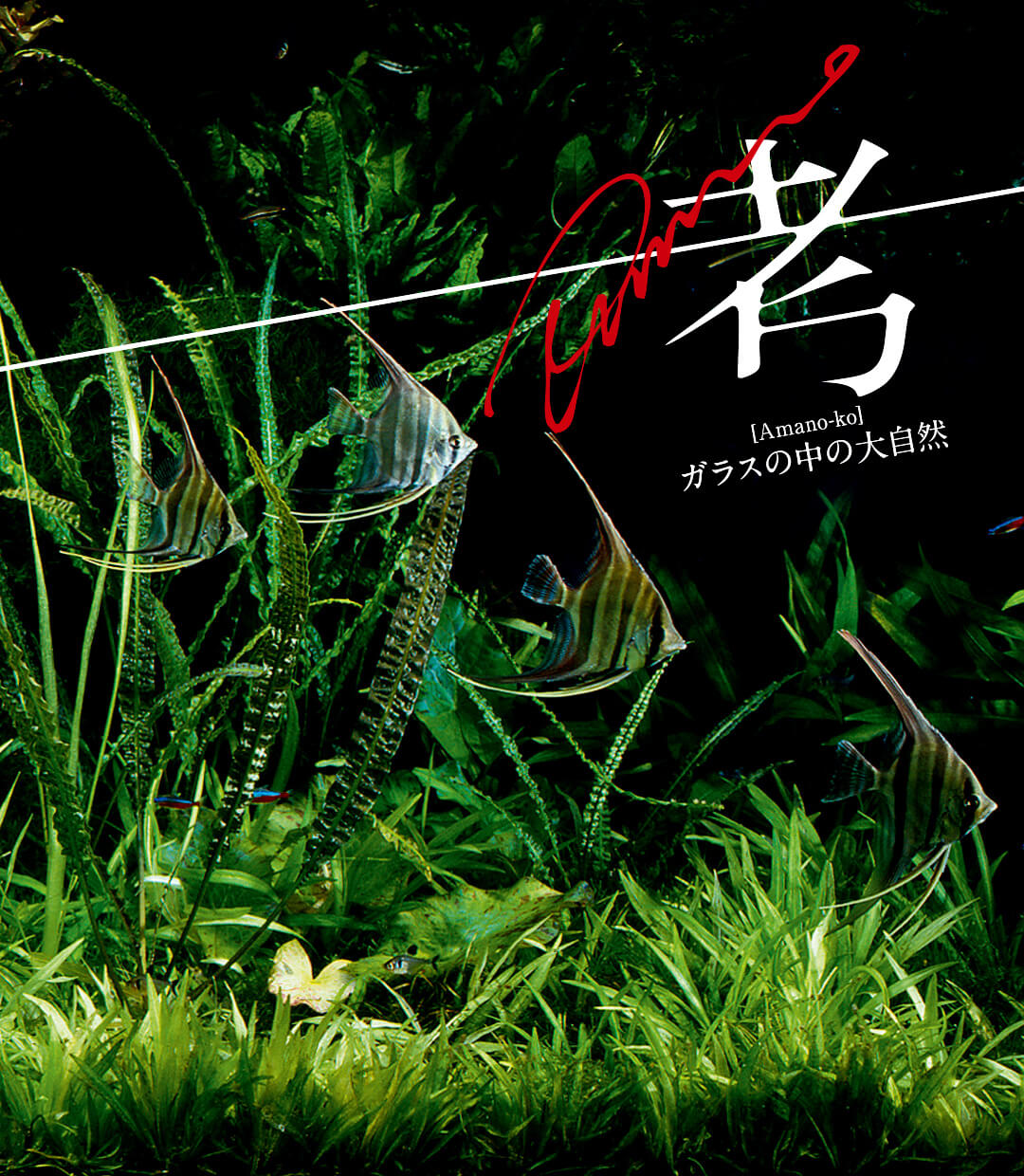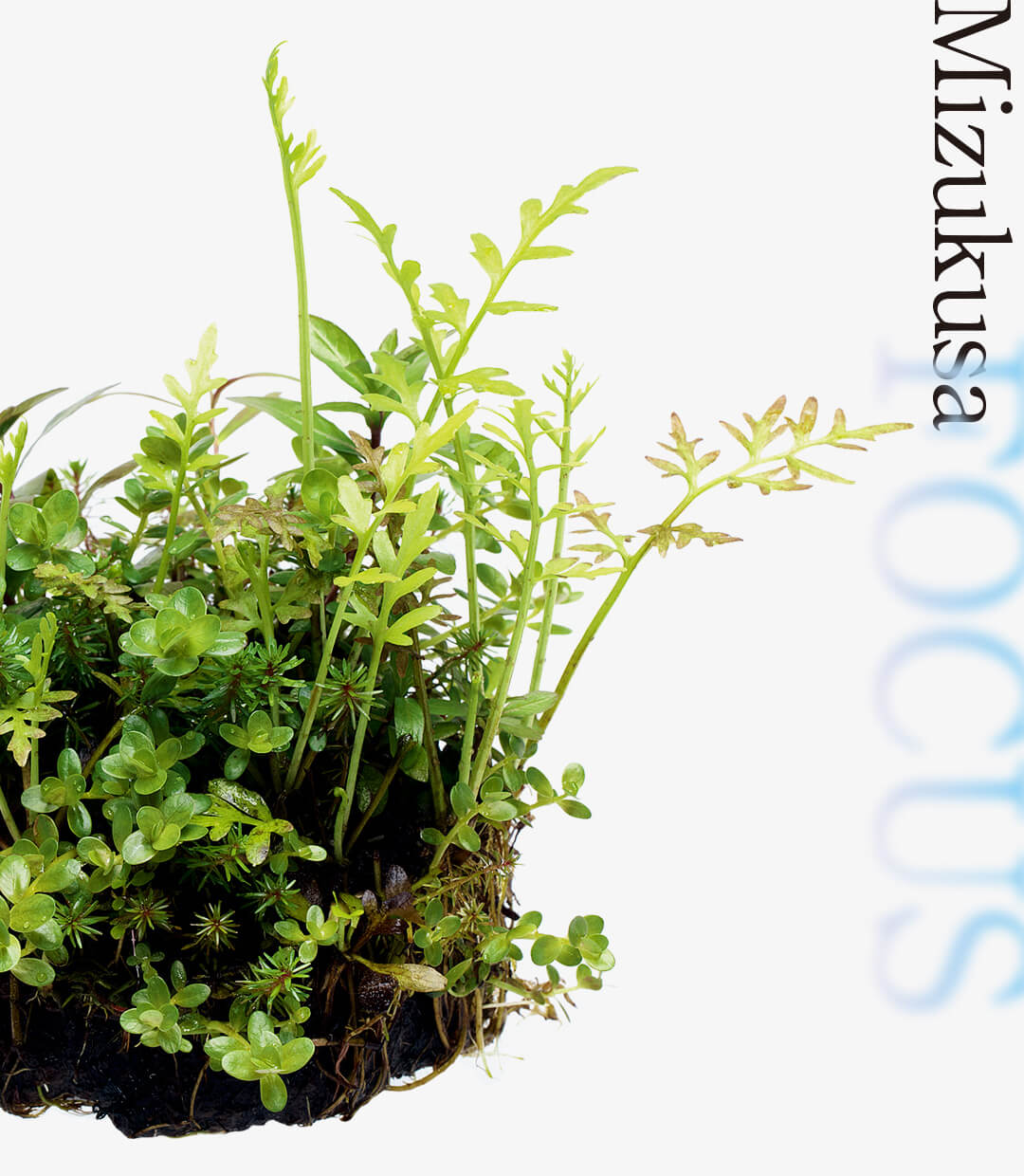LAYOUT 2021.11.19
NATURE IN THE GLASS ‘Admiring Spring’
The mountain that shows signs of spring and starts creating beautiful scenes with fresh greenery when the long winter ends, is expressed with splendid clusters of aquatic plants and how the aquatic plants are beautifully scattered.
When the snowy long monochrome world ends, mountains in Niigata instantly show signs of spring and start creating beautiful scenes with colorful fresh greenery. I planted a wide variety of stem plants as having such spring mountains with fresh greenery as a motif. There are so many expressions of nature that we notice only when we go out to the fields, such as a beautiful cluster of trees we see and beautiful contrasts that other trees create in the cluster. Such small discoveries are utilized in the expression of this aquascape.
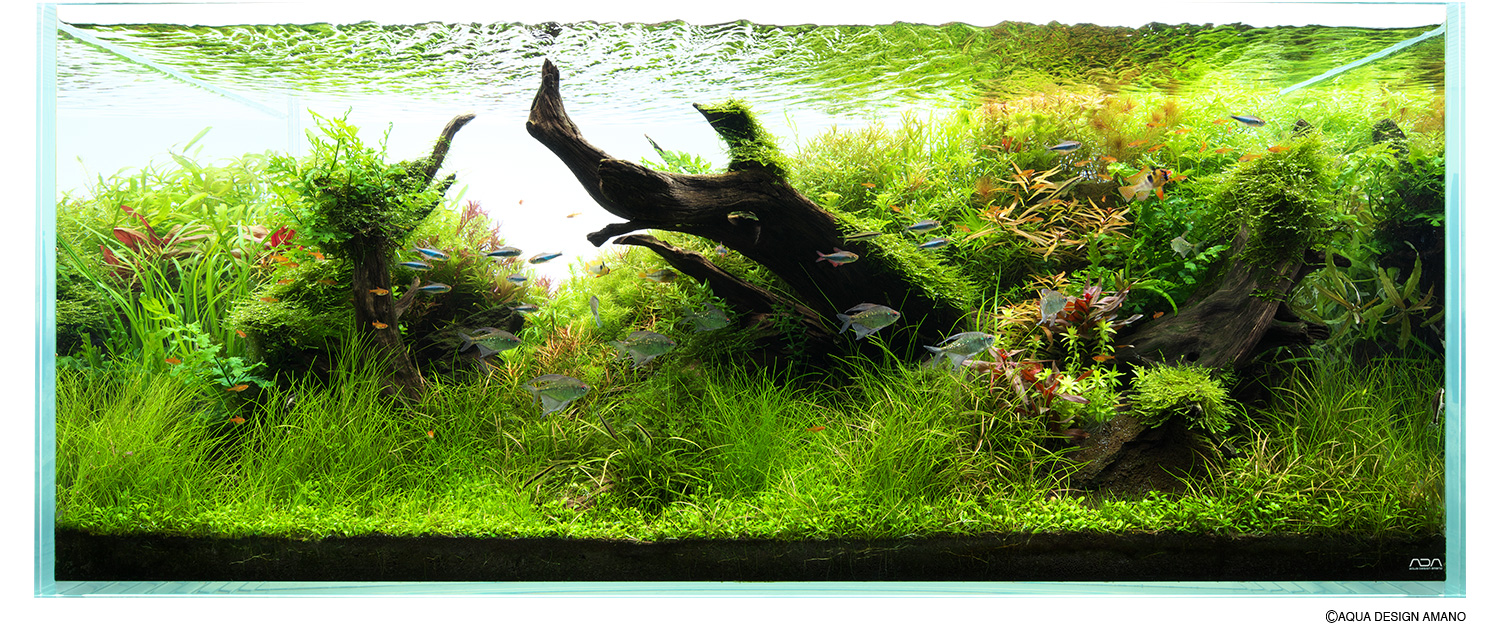
I expressed the soft and delicate beauty of aquatic plants in this aquascape by following the basics of Nature Aquarium. More than 30 species of aquatic plants were planted, and it became an attractive work in which the bright impression with stem plants was all over the aquascape.
Shooting date: August 18th, 2021(ADA)
Creator: Yusuke Homma
Aquarium: Cube Garden W120×D50×H50(cm)
Lighting: Solar RGB x 2, turned on for 8.5 hours per day
Filter: Super Jet Filter ES-1200(Bio Rio G)
Material: Horn Wood, Sansui Stone
Substrate: Aqua Soil – Amazonia, Power Sand Advance L, Bacter100, Clear Super, Tourmaline BC
CO2: Pollen Glass Beetle 50Ø, 10 bubbles per second via CO2 Beetle Counter (using Tower)
Aeration: 15.5 hours after the light is turned off using Lily Pipe P-6
Additives: Brighty K, Green Brighty Mineral, Green Brighty Nitrogen
Water change: 1/2 once a week
Water quality: Temperature: 25ºC; pH: 6.0; TH: 20 mg/L
Plant
Rotala sp. ‘Inle’
Rotala macrandra ‘Narrow Leaf’
Rotala macrandra ‘Shimoga’
Rotala sp. ‘Fujian’
Ludwigia peruensis
Ludwigia glandulosa
Ludwigia brevipes
Pogostemon yatabeana
Bolbitis heudelotii
Potamogeton gayi
Pogostemon sp. ‘Dassen’
Hygrophila polysperma
Hygrophila sp. ‘Tiger’
Myriophyllum hippuroides
Myriophyllum sp.
Limnophila sessiliflora
Alternanthera reineckii
Bacopa caroliniana
Heteranthera zosterifolia
Vesicularia sp.
Rotala nanjean
Rotala sp. ‘Bangladesh’
Rotala sp. Hra
Eleocharis acicularis
Ludwigia arcuata
Rotala sp. ‘Ceylon’
Tonina fluviatilis
Cyperus helferi
Glossostigma elatinoides
Rotala rotundifolia ‘Green’
Echinodorus tenellus
Taxiphyllum barbieri
Fish and Invertebrates
Moenkhausia pittieri
Hyphessobrycon margitae
Hyphessobrycon amandae
Microgeophagus ramirezi
Crossocheilus oblongus
Otocinclus sp.
Caridina multidentata
DATA
Shooting date: August 18th, 2021(ADA)
Creator: Yusuke Homma
Aquarium: Cube Garden W120×D50×H50(cm)
Lighting: Solar RGB x 2, turned on for 8.5 hours per day
Filter: Super Jet Filter ES-1200(Bio Rio G)
Material: Horn Wood, Sansui Stone
Substrate: Aqua Soil – Amazonia, Power Sand Advance L, Bacter100, Clear Super, Tourmaline BC
CO2: Pollen Glass Beetle 50Ø, 10 bubbles per second via CO2 Beetle Counter (using Tower)
Aeration: 15.5 hours after the light is turned off using Lily Pipe P-6
Additives: Brighty K, Green Brighty Mineral, Green Brighty Nitrogen
Water change: 1/2 once a week
Water quality: Temperature: 25ºC; pH: 6.0; TH: 20 mg/L
Plant
Rotala sp. ‘Inle’
Rotala macrandra ‘Narrow Leaf’
Rotala macrandra ‘Shimoga’
Rotala sp. ‘Fujian’
Ludwigia peruensis
Ludwigia glandulosa
Ludwigia brevipes
Pogostemon yatabeana
Bolbitis heudelotii
Potamogeton gayi
Pogostemon sp. ‘Dassen’
Hygrophila polysperma
Hygrophila sp. ‘Tiger’
Myriophyllum hippuroides
Myriophyllum sp.
Limnophila sessiliflora
Alternanthera reineckii
Bacopa caroliniana
Heteranthera zosterifolia
Vesicularia sp.
Rotala nanjean
Rotala sp. ‘Bangladesh’
Rotala sp. Hra
Eleocharis acicularis
Ludwigia arcuata
Rotala sp. ‘Ceylon’
Tonina fluviatilis
Cyperus helferi
Glossostigma elatinoides
Rotala rotundifolia ‘Green’
Echinodorus tenellus
Taxiphyllum barbieri
Fish and Invertebrates
Moenkhausia pittieri
Hyphessobrycon margitae
Hyphessobrycon amandae
Microgeophagus ramirezi
Crossocheilus oblongus
Otocinclus sp.
Caridina multidentata
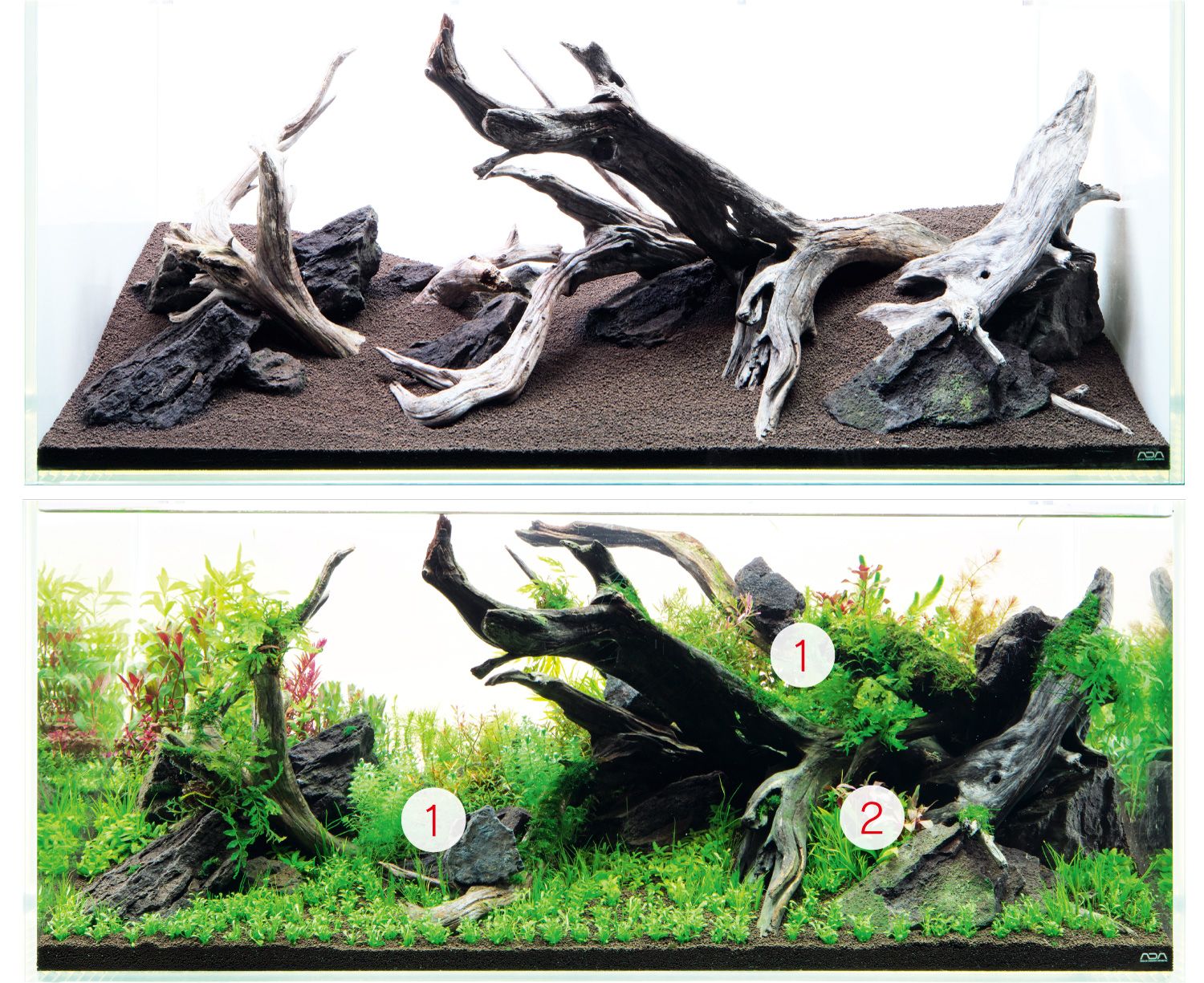
Changes in impression depending on the aquatic plants
When the aquatic plants grow and swallow the roughness of the materials felt at the composition stage, the impression becomes soft.
When the aquatic plants grow and swallow the roughness of the materials felt at the composition stage, the impression becomes soft.
1. Blurring the boundaries of aquatic plants
I purposely planted aquatic plants to make them look ambiguous instead of clearly dividing the planting area between the aquatic plants. And I consciously created beautiful clusters by planting various species together.
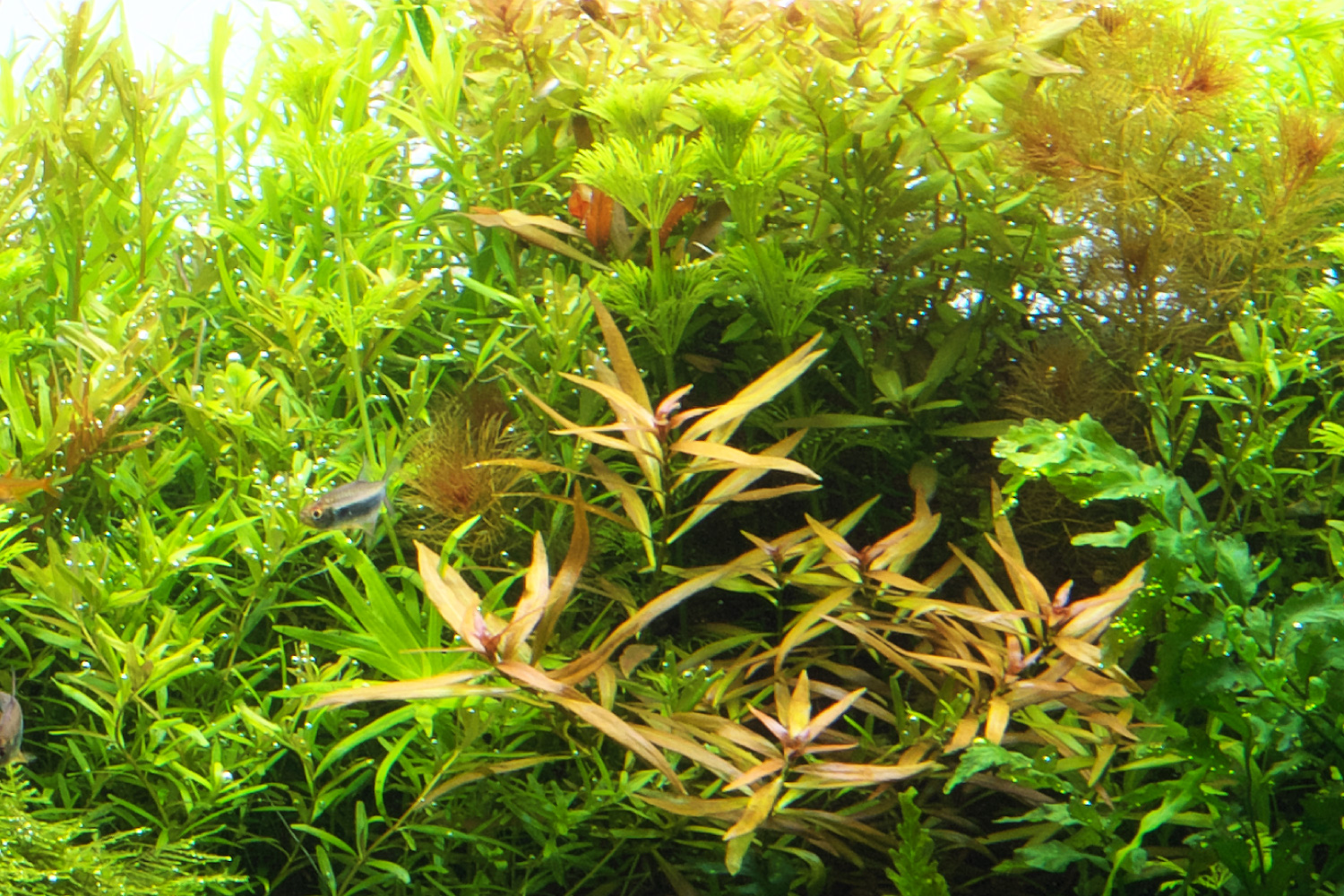
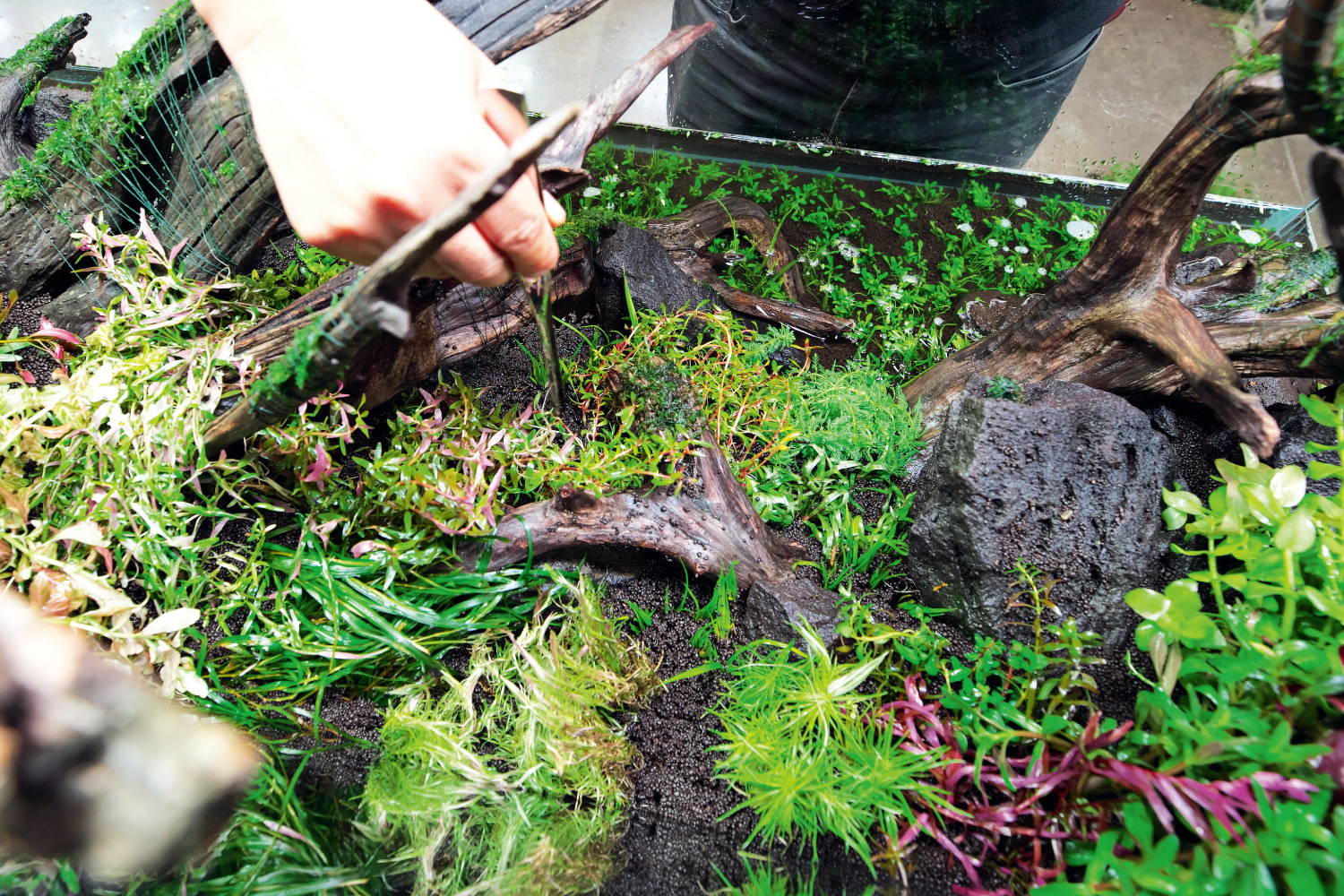
2. Scattering beauty
By planting aquatic plants with distinctive colors or leaf shapes as accents, I consciously accentuate the beautiful touches scattered in the clusters as well as guiding a viewer’s line of sight.
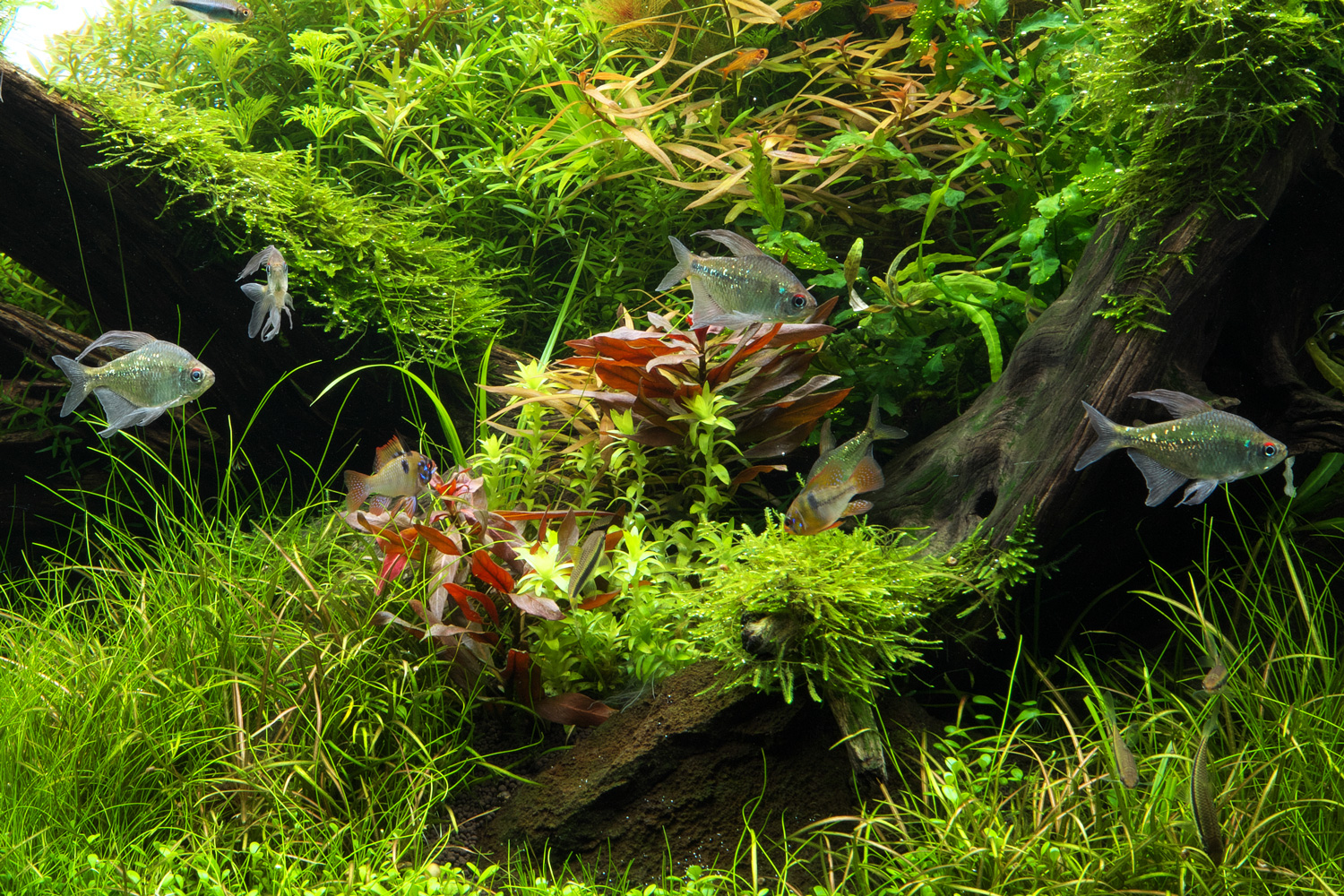
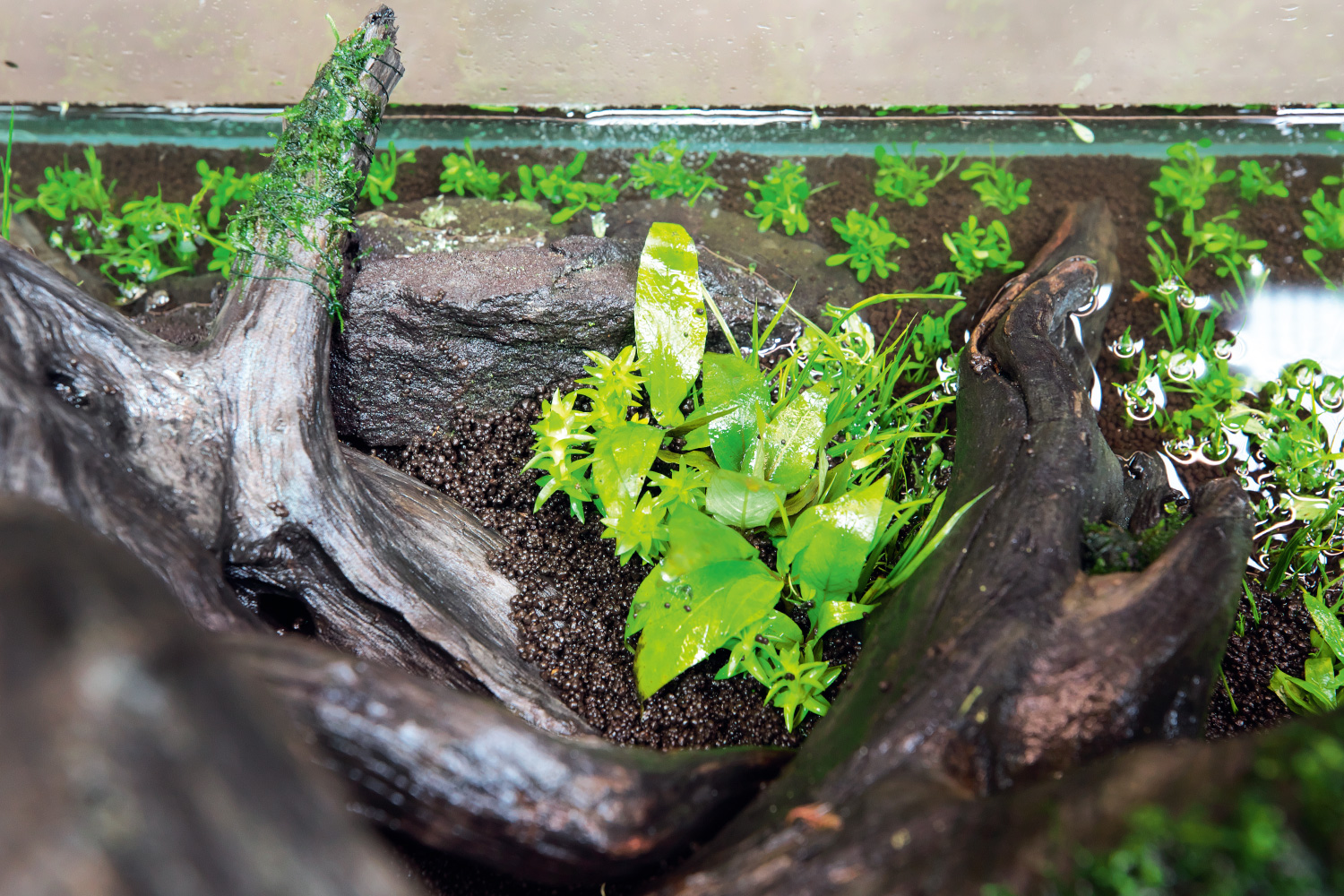
I planted Tonina fluviatilis that grows tall and Ludwigia peruensis in the mid-ground and aimed to give a sense of perspective.
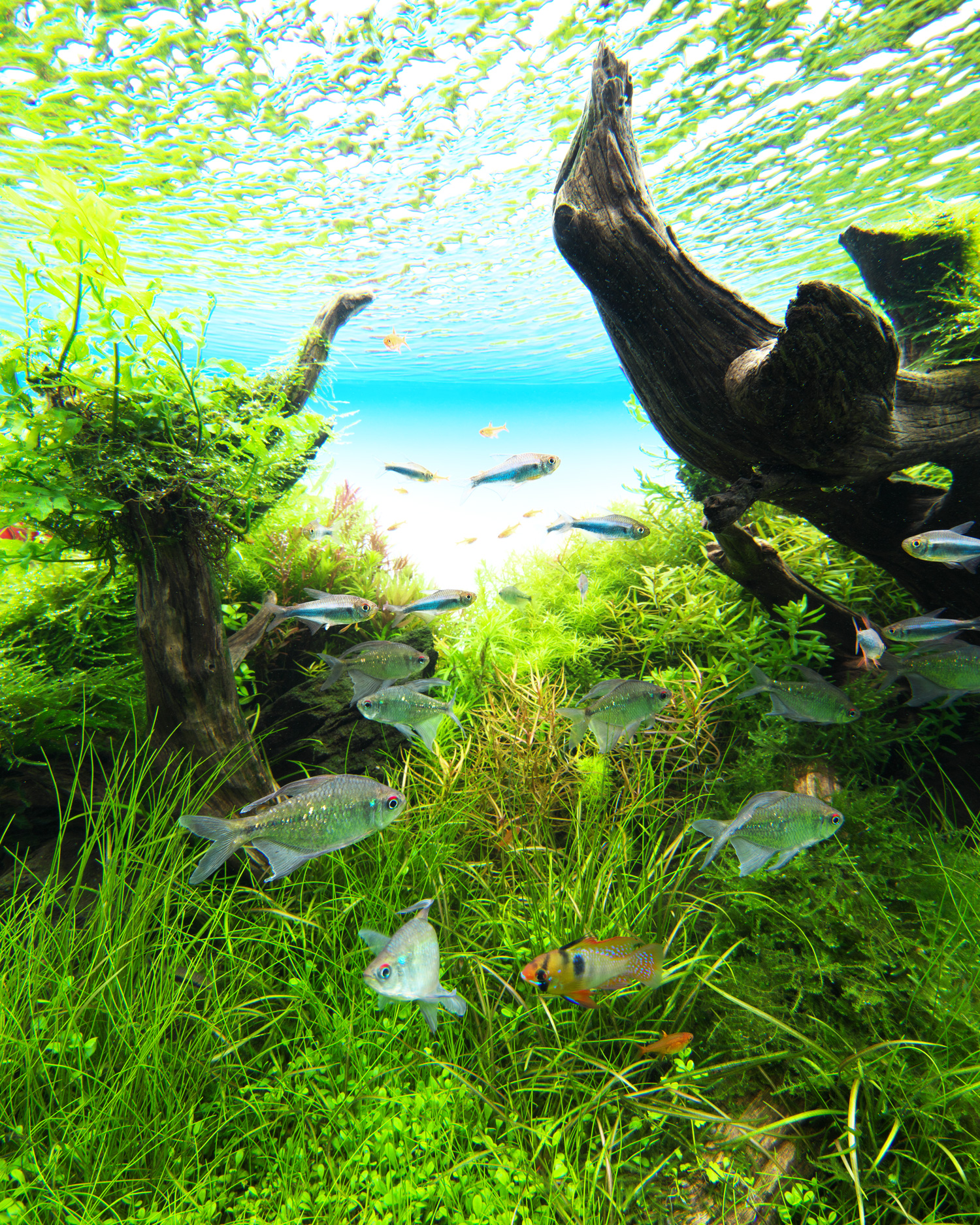
Mixed aquatic plants would create unplanned beauty and give a sense of security to the fish swimming in the aquarium.
